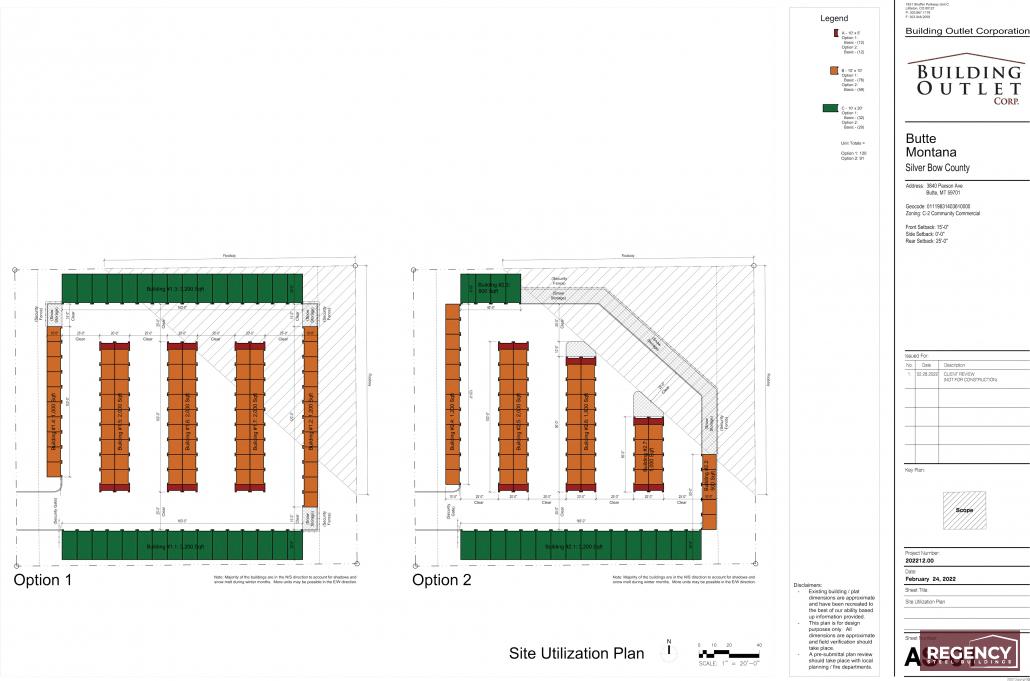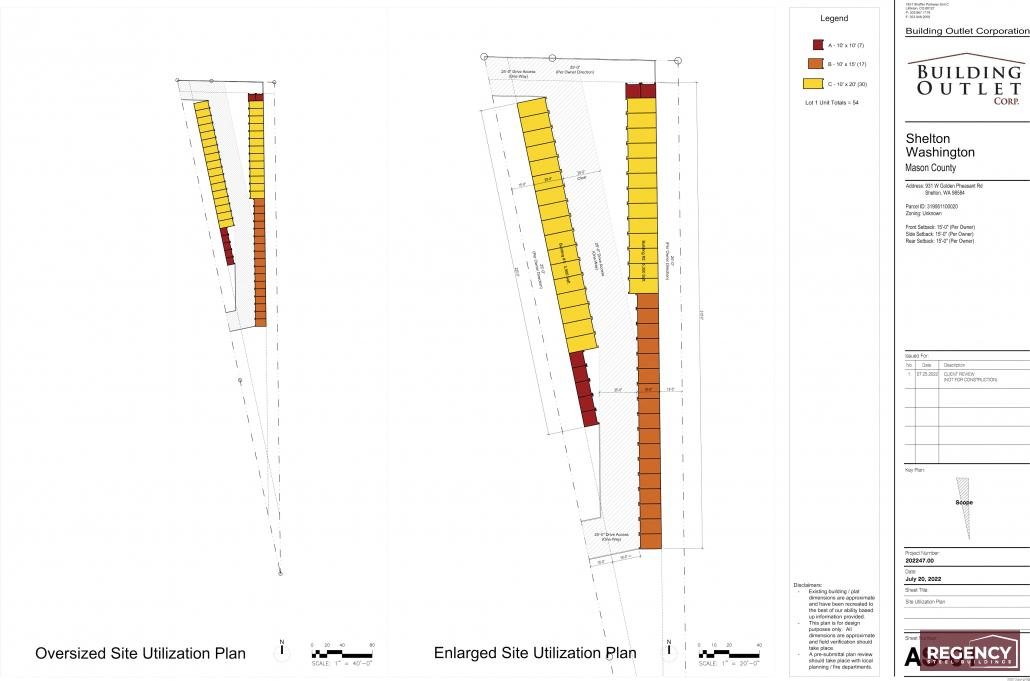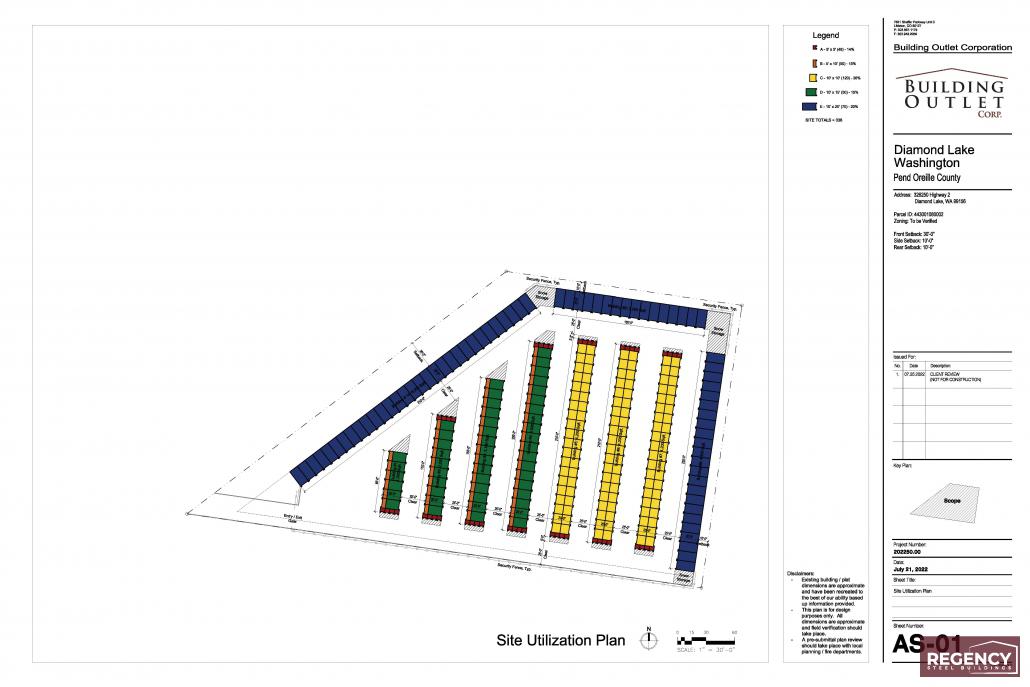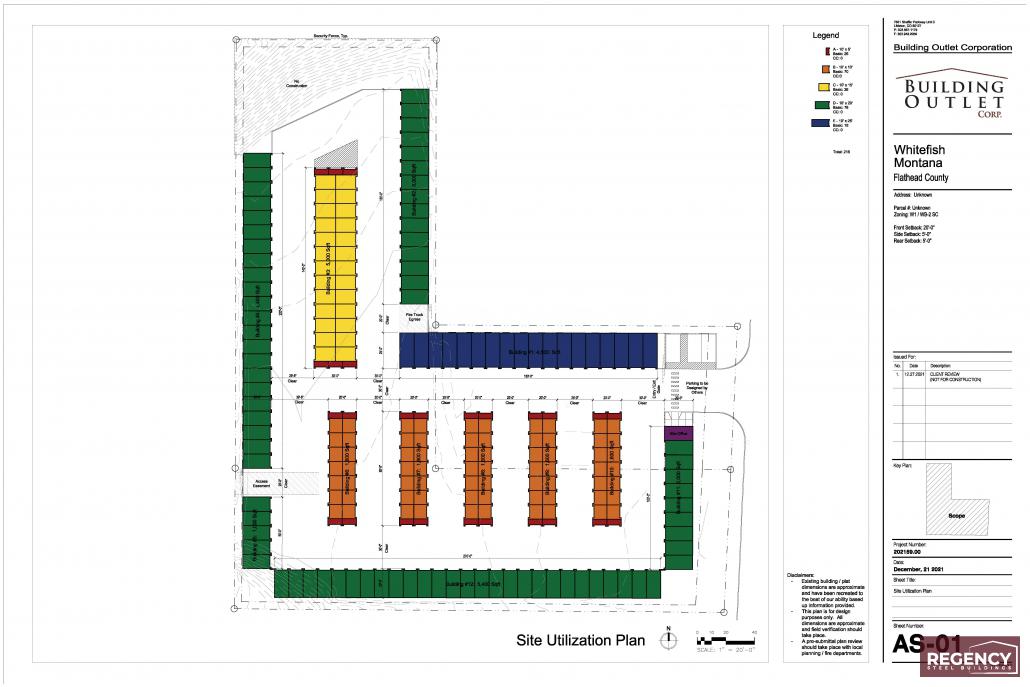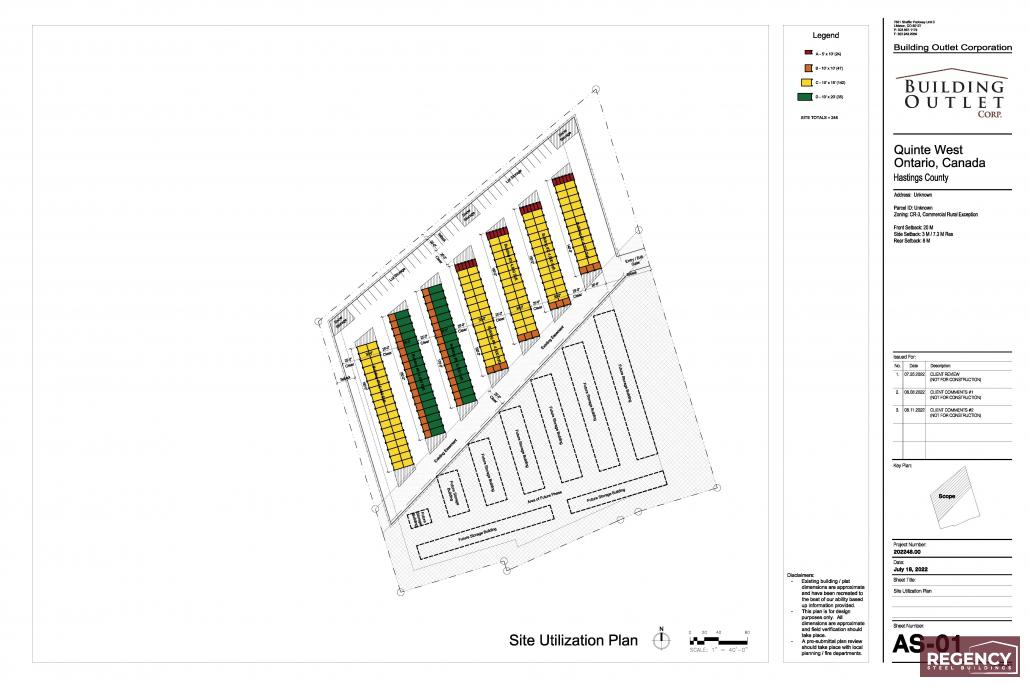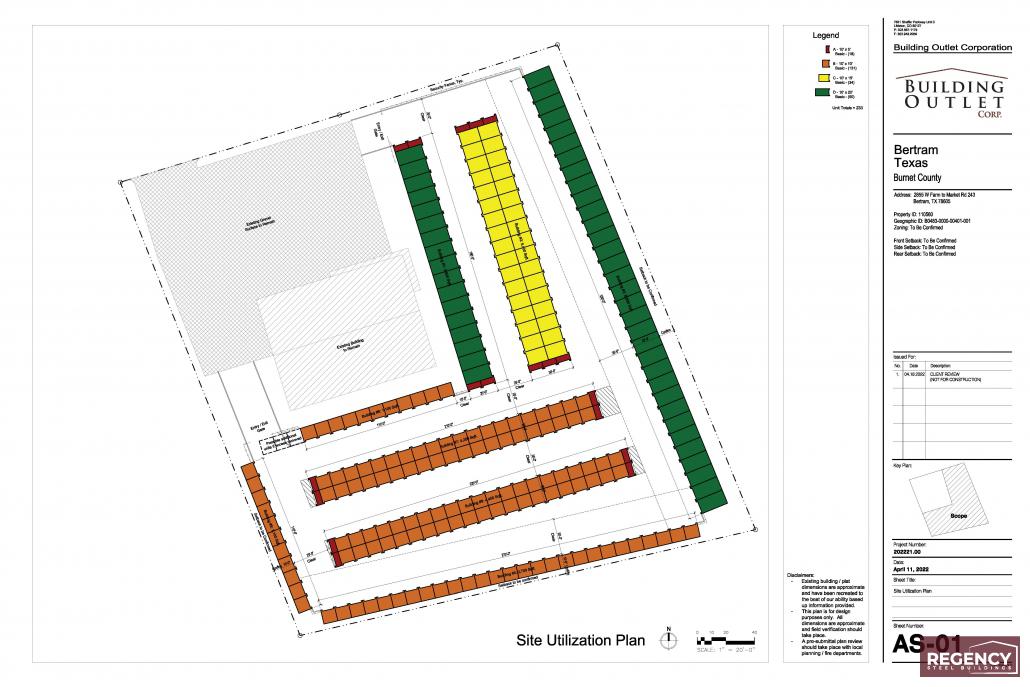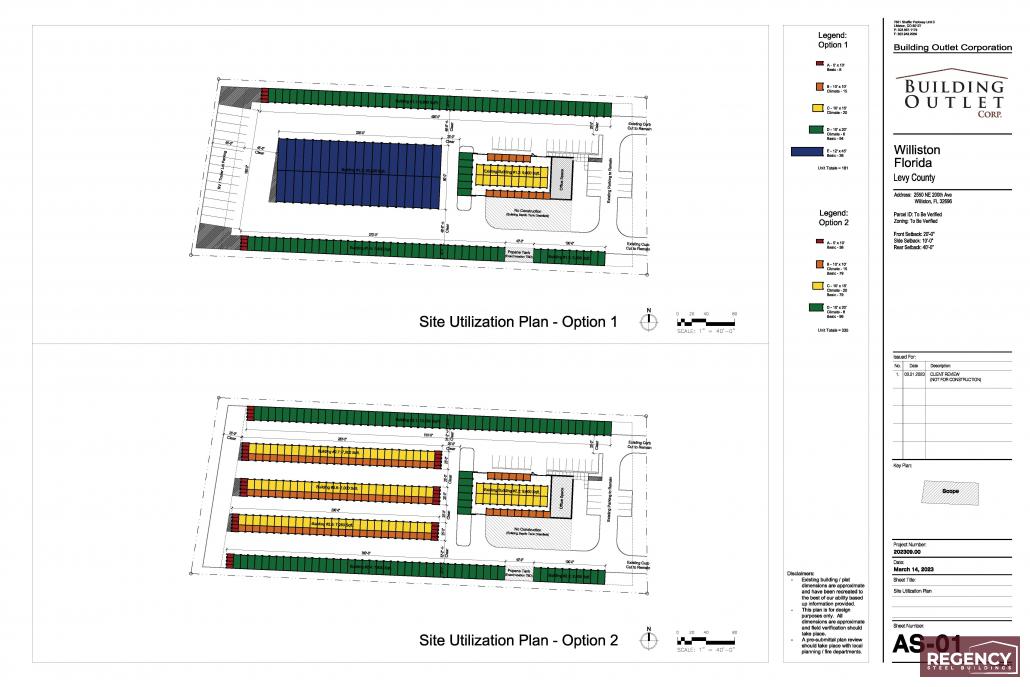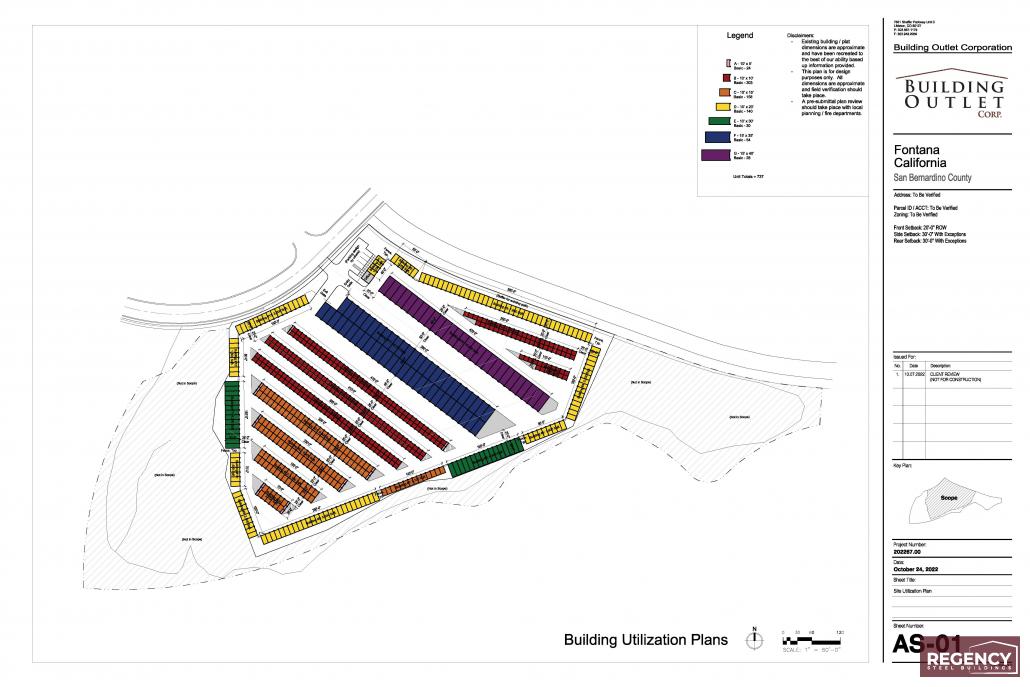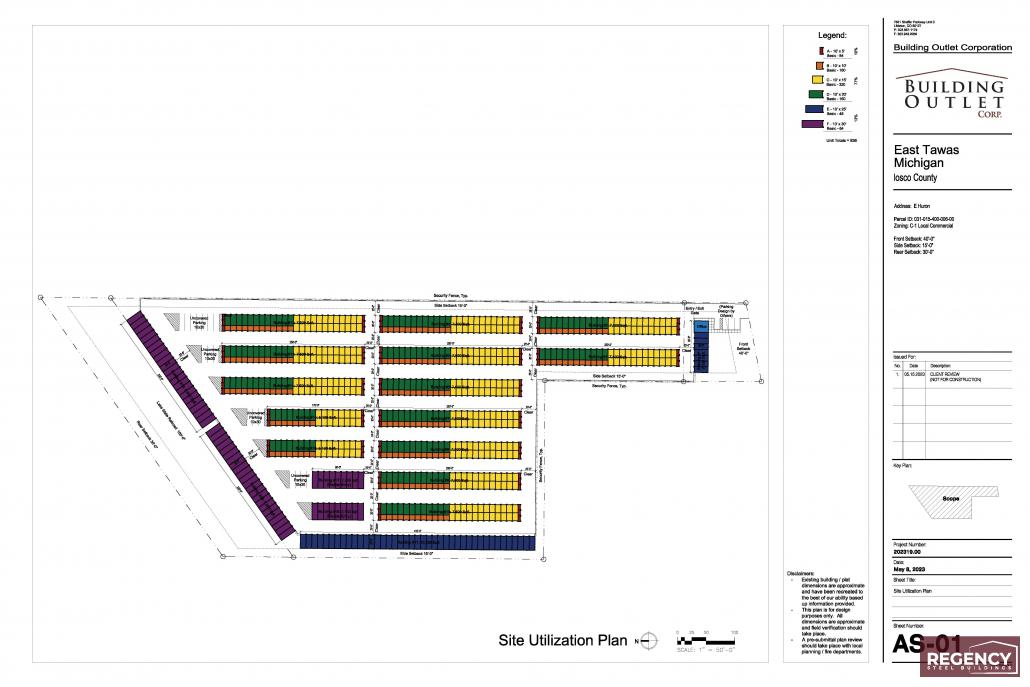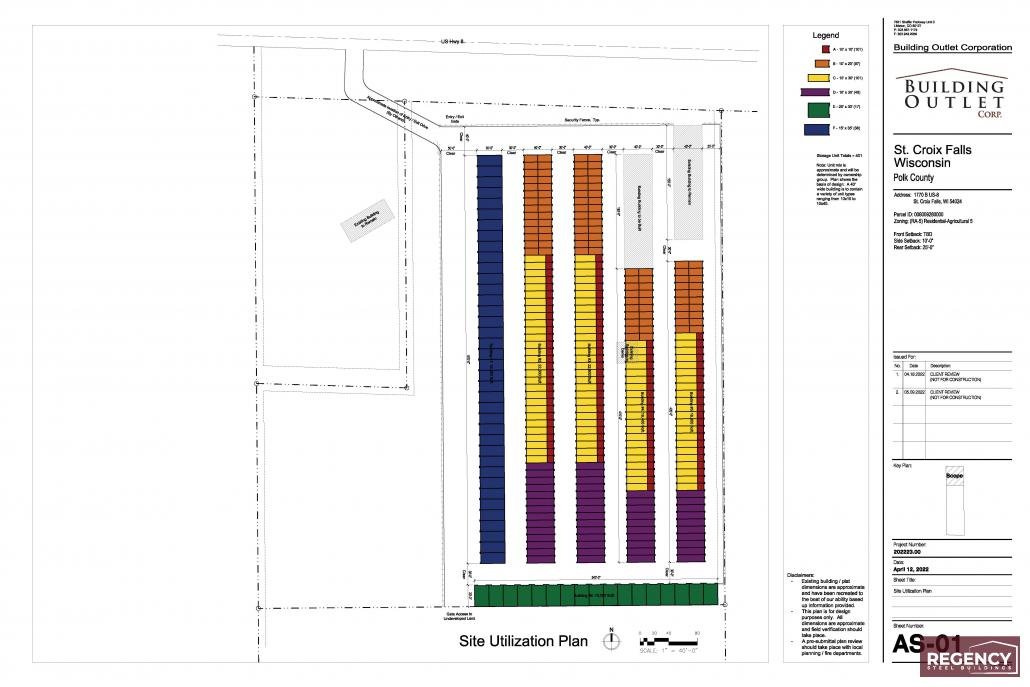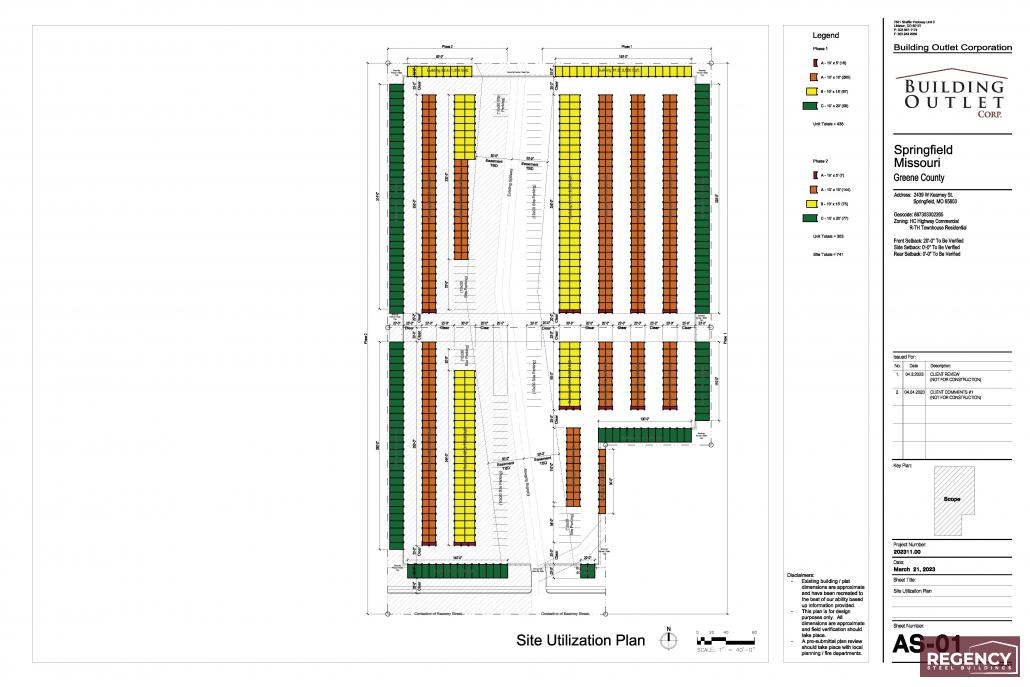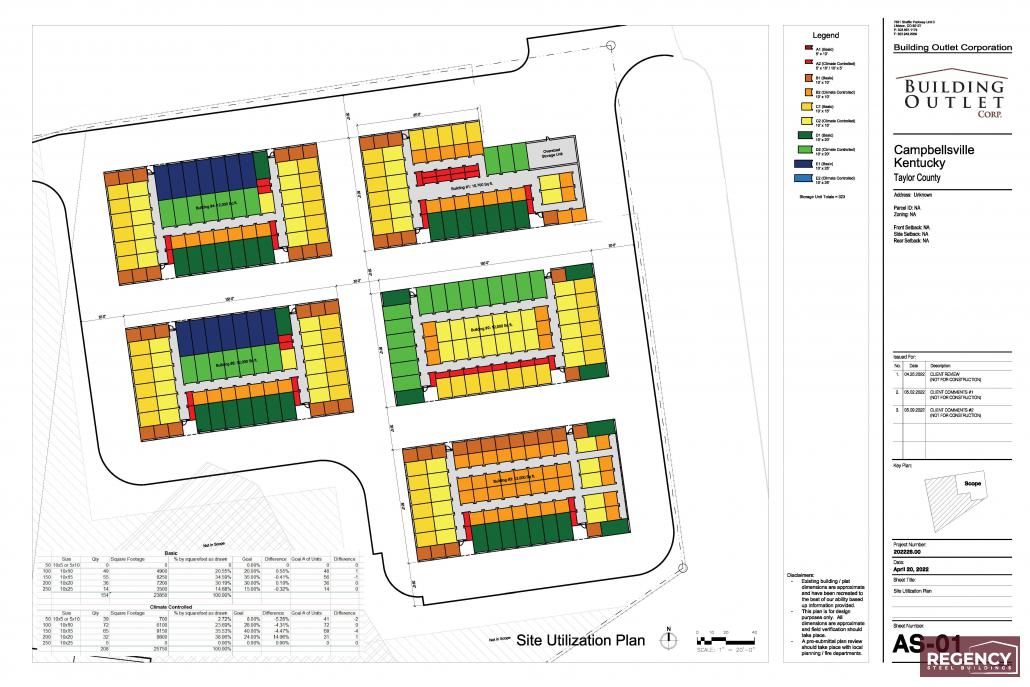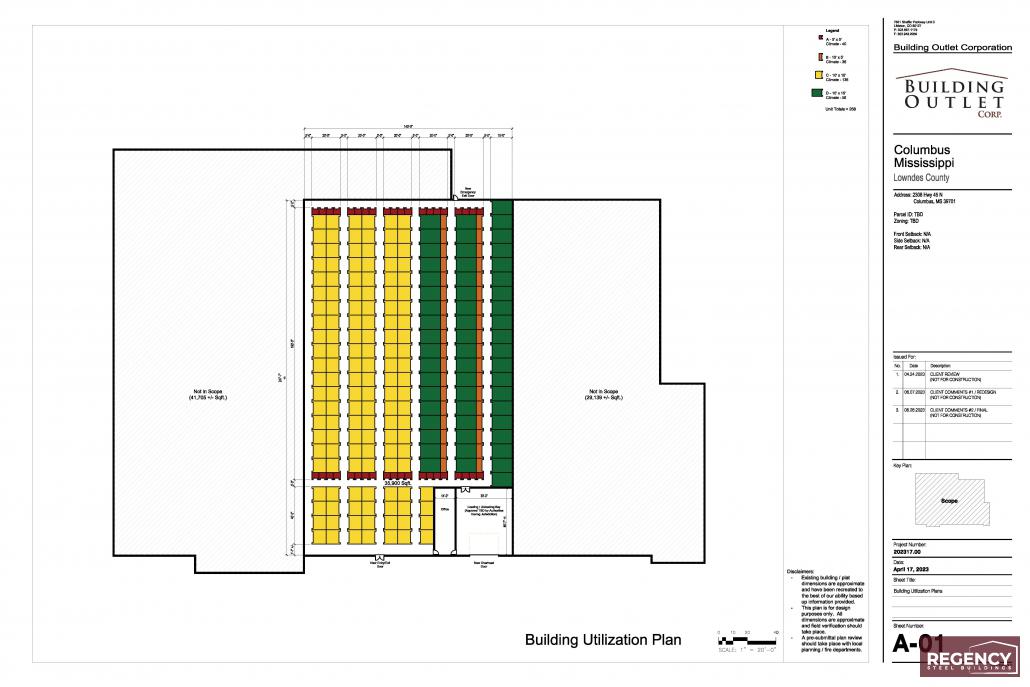Considerations for developing a plot of land, such as zoning, drainage, easements, signage restrictions, and accessibility, are crucial. Property values and development costs also play a significant role in your investment. Proper site planning is essential for project success.
Our goal is to design your land for its highest and best use, considering factors like building sizes, unit layouts, entrance location, setbacks, isles, approaches, outdoor parking, water retention, and slope adjustments. Your input, along with the expertise of a design professional experienced in mini storage projects, will help shape the site plan for a practical layout for the land parcel.
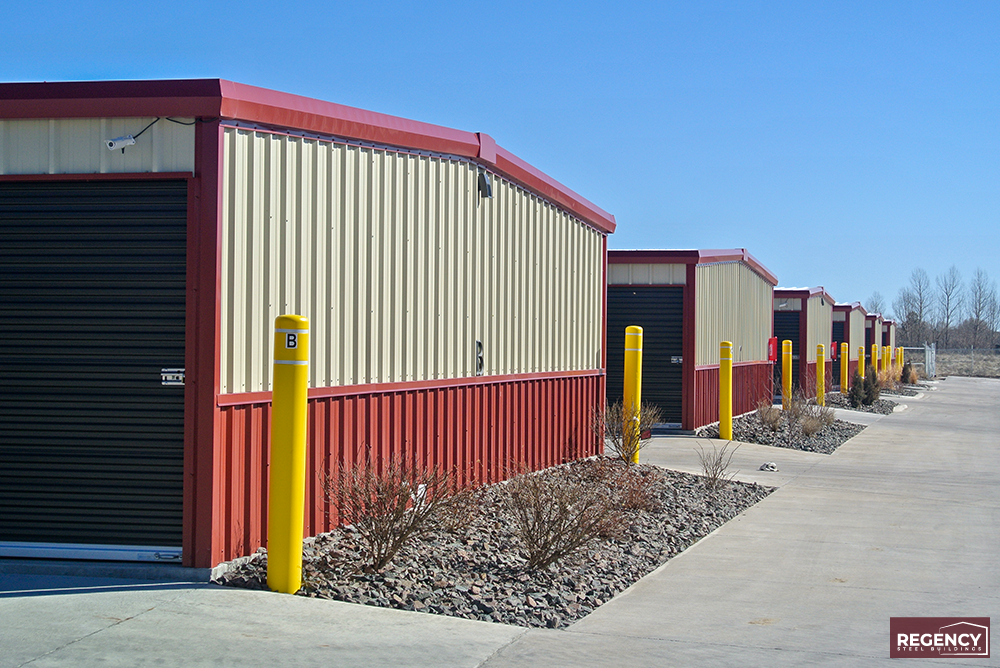
All we need from you to get started:
Surveyed property plot plan showing recorded easements and elevations
Access information
Address
Proximity to major intersections (for layout consideration)
Site Plan Essentials
- Building setbacks are legal distances for placing buildings from the property line per local zoning rules. Parking and drive aisles are allowed, but not permanent structures. Front setbacks may include road widening or landscaping requirements.
- Utility easements are areas where permanent structures are not permitted. Check deed restrictions and local planning & zoning regulations for other restrictions.
- Rental office access and customer parking should be outside the security gate. Handicap parking should be clearly marked and close to the door.
- Approach and entrance should allow passing vehicles and safe visitor entry. Vehicle stacking before the security gate should be at least three deep, with entrance drive widths of at least 30 feet.
- Drive aisles should provide sufficient space for commercial vehicles and unloading. For driveways with outside storage, recommend minimum widths are 25 feet for parallel drives and 30 feet for cross aisles. RVs and fire engines need proper turn radius space, subject to approval by the local fire marshal.
- Drive aisles for RV/Boat storage should be at least 35 feet wide for 60-degree angled parking and 55 feet wide for 90-degree parking.
- A retention basin for stormwater runoff can be placed in the lowest rear corner of the property, with the entire site graded to drain towards it.
- Gaps between buildings provide access for maintaining setbacks and snow storage in winter climates.
- Cement-filled bollards protect building corners from damage.
- Additional parking near interior storage buildings prevents congestion in drive aisles near unloading areas.
- Interior storage doorways should open outwards and be recessed to avoid obstruction. Four-foot doors with accessible handcarts are recommended. Hallways should be five feet wide, with easy access to handcarts near entrances.
- Orienting buildings parallel to the longest property line maximizes net rentable square feet and fewer drive aisles. Placing buildings along setbacks in a “Fortress Configuration” adds security and saves on fencing costs. In winter climates, north-to-south orientation helps melt snow on roofs and prevents ice accumulation at door bottoms.
*Note: It is important that you verify your zoning limitations and requirements prior to beginning your development to insure that your property qualifies for this type of construction and the use in which you are proposing.
